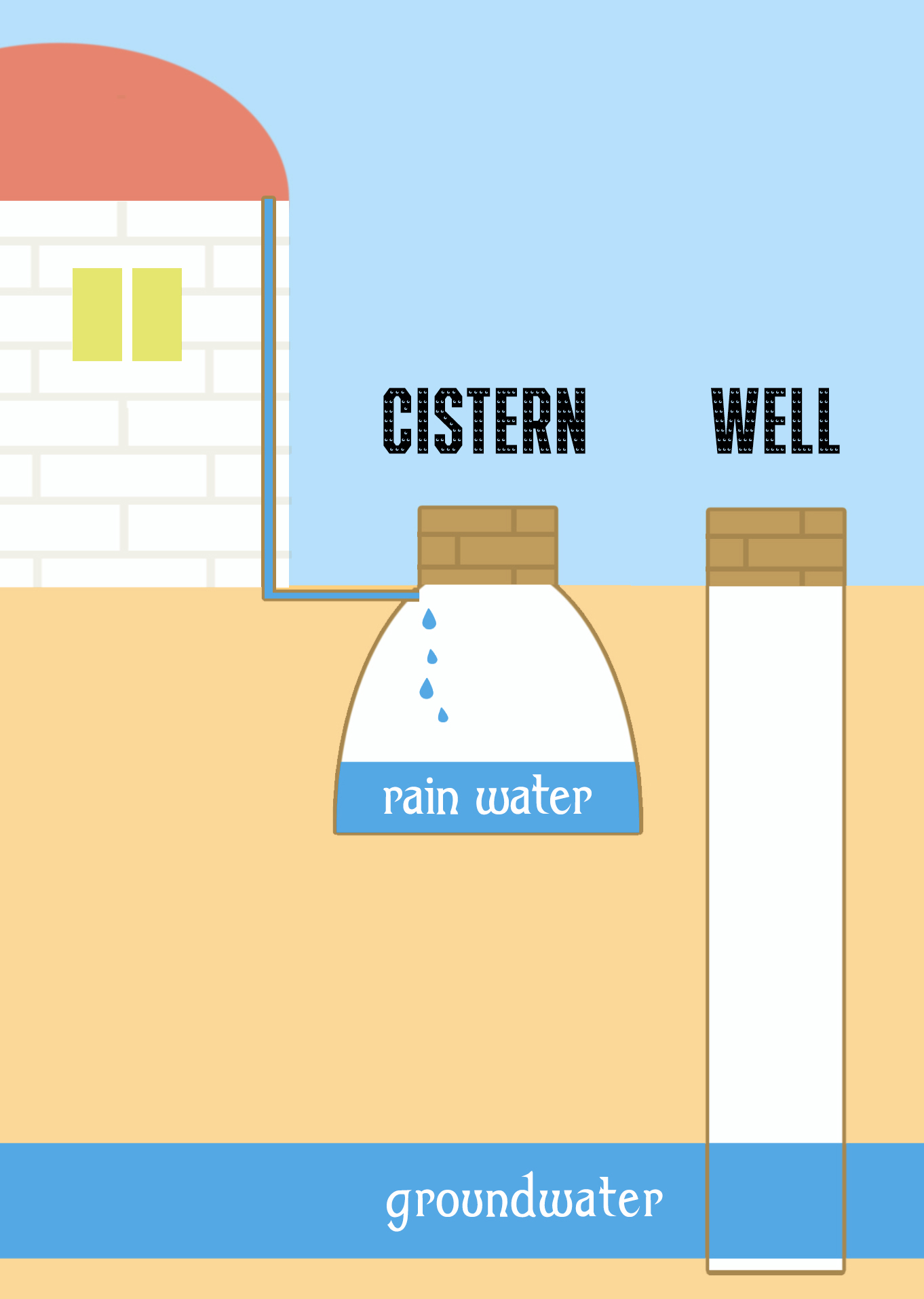Well
 A well is an excavation or structure created on the earth by digging, driving, or drilling to access liquid resources, usually water. The oldest and most common kind of well is a water well, to access groundwater in underground aquifers. The well water is drawn up by a pump, or using containers, such as buckets that are raised mechanically or by hand. Water can also be injected back into the aquifer through the well. Wells were first constructed at least eight thousand years ago and historically vary in construction from a sediment of a dry watercourse to the qanats of Iran, and the stepwells and sakiehs of India. Placing a lining in the well shaft helps create stability, and linings of wood or wickerwork date back at least as far as the Iron Age.
A well is an excavation or structure created on the earth by digging, driving, or drilling to access liquid resources, usually water. The oldest and most common kind of well is a water well, to access groundwater in underground aquifers. The well water is drawn up by a pump, or using containers, such as buckets that are raised mechanically or by hand. Water can also be injected back into the aquifer through the well. Wells were first constructed at least eight thousand years ago and historically vary in construction from a sediment of a dry watercourse to the qanats of Iran, and the stepwells and sakiehs of India. Placing a lining in the well shaft helps create stability, and linings of wood or wickerwork date back at least as far as the Iron Age.Wells have traditionally been sunk by hand digging, as is still the case in rural areas of the developing world. These wells are inexpensive and low-tech as they use mostly manual labour, and the structure can be lined with brick or stone as the excavation proceeds. A more modern method called caissoning uses pre-cast reinforced concrete well rings that are lowered into the hole. Driven wells can be created in unconsolidated material with a well hole structure, which consists of a hardened drive point and a screen of perforated pipe, after which a pump is installed to collect the water. Deeper wells can be excavated by hand drilling methods or machine drilling, using a bit in a borehole. Drilled wells are usually cased with a factory-made pipe composed of steel or plastic. Drilled wells can access water at much greater depths than dug wells.
Two broad classes of well are shallow or unconfined wells completed within the uppermost saturated aquifer at that location, and deep or confined wells, sunk through an impermeable stratum into an aquifer beneath. A collector well can be constructed adjacent to a freshwater lake or stream with water percolating through the intervening material. The site of a well can be selected by a hydrogeologist, or groundwater surveyor. Water may be pumped or hand drawn. Impurities from the surface can easily reach shallow sources and contamination of the supply by pathogens or chemical contaminants needs to be avoided. Well water typically contains more minerals in solution than surface water and may require treatment before being potable. Soil salination can occur as the water table falls and the surrounding soil begins to dry out. Another environmental problem is the potential for methane to seep into the water. Provided by Wikipedia
-
1
-
2Published 2004Other Authors: “…Well-Stam…”